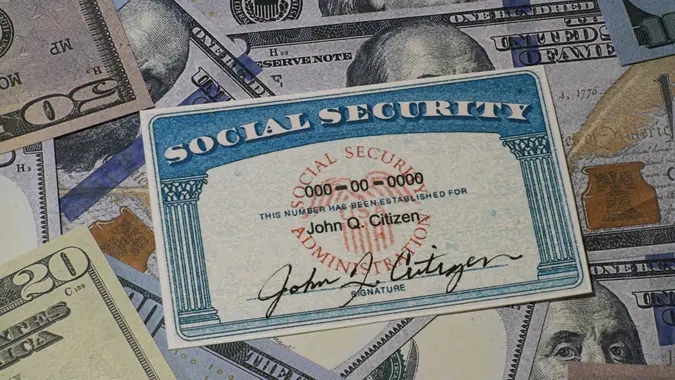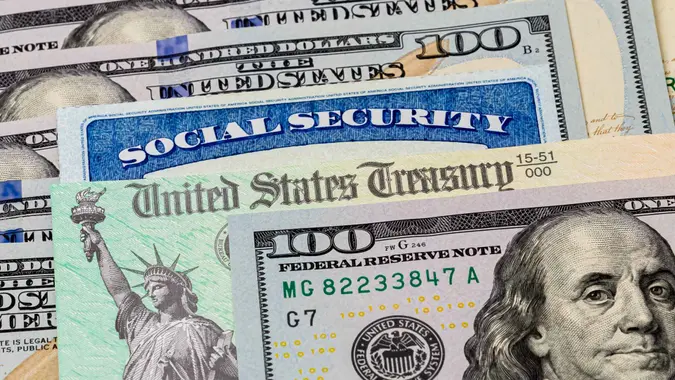The Social Security Tax Trap That Catches Wealthy Retirees Off Guard

Commitment to Our Readers
GOBankingRates' editorial team is committed to bringing you unbiased reviews and information. We use data-driven methodologies to evaluate financial products and services - our reviews and ratings are not influenced by advertisers. You can read more about our editorial guidelines and our products and services review methodology.

20 Years
Helping You Live Richer

Reviewed
by Experts

Trusted by
Millions of Readers
American workers often pay less tax after they retire. But if you’ve built up a large nest egg in retirement accounts, you could face an unexpected increase in Social Security taxes.
Here’s what you need to know about the Social Security Tax trap.
What Is the Social Security Tax Trap?
The Social Security tax trap is an increase in Social Security tax due to an increase in income. The main culprit is the annual required minimum distribution (RMD) from tax-deferred investment accounts beginning at age 73. RMDs are a double whammy — they both increase your taxable income and reduce your net Social Security benefit. They can also increase your Medicare premiums.
How Social Security Taxes Work
Retirees only pay tax on their Social Security benefits if their combined income exceeds these limits:
- $25,000 for individual filers
- $32,000 for joint filers
The Social Security Administration defines combined income as adjusted gross income plus tax-exempt interest income and one-half of Social Security benefits. Those with excess combined income pay tax on 50% to 85% of their benefits.
This “tax torpedo” will affect a few retirees in 2025 because of a new $6,000 tax deduction for people ages 65 and up (less a 6% reduction for incomes over $75,000). But if your RMD pushes your income above the thresholds, you could go from paying tax on 0% of your Social Security benefits to paying tax on 85% of your benefits overnight.
How RMDs Affect Medicare Premiums
Retirees whose incomes exceed certain thresholds pay a Medicare surcharge, or income-related monthly adjustment amount (IRMAA), on their Part B and Part D benefits. That’s in addition to their regular Part B and Part D premiums. RMDs can easily push you into the next bracket — a situation finance experts call a tax cliff — especially if you’re married and you and your spouse both have tax-deferred retirement accounts.
How To Avoid Social Security Tax Traps in Retirement
You can take steps to keep Social Security tax traps from catching you off guard.
Convert Your Traditional IRA to a Roth
A Roth IRA conversion eliminates the RMD on the converted amount. You’ll pay income tax in the year you do the conversion, but you can minimize the hit by spreading the conversion over several years. Schwab recommends converting as much as you can without pushing your income into a higher tax bracket.
Delay Social Security Benefits
Delaying Social Security earns you credits that increase your future benefits. You can earn the credits up until age 70. In the meantime, you’ll draw from your retirement savings so that by age 73, your RMDs will be smaller.
Choose the Right Withdrawal Strategy
How you withdraw money from your retirement savings can impact taxes on Social Security and the Medicare IRMAA. Fidelity notes that while conventional wisdom says to deplete taxable accounts first, then tax-deferred accounts and tax-exempt accounts, you might be better off with proportional withdrawals from all three.
Make Qualified Charitable Distributions
Qualified charitable distributions (QCDs) let people age 70.5 and up count charitable donations made from their IRAs toward their RMDs. In 2025, eligible donations of up to $162,000 count toward your RMD and effectively reduce your taxable income.
 Written by
Written by  Edited by
Edited by 


























